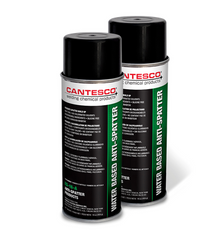Guide complet des sprays anti-projections en soudage : types, avantages et applications
Introduction:
Les travaux de soudage sont souvent confrontés au problème des projections : ces gouttelettes tenaces qui adhèrent aux surfaces et aux équipements, rendant le nettoyage particulièrement difficile. Les sprays anti-projections sont devenus les alliés indispensables des soudeurs, conçus pour éviter ces désagréments. Mais de quoi s'agit-il exactement et comment fonctionnent-ils ? Ce guide explore les différents types de sprays anti-projections, leurs avantages et des conseils d'application pour vous aider à les choisir et à les utiliser efficacement.
Que sont les sprays anti-éclaboussures et pourquoi sont-ils importants ?
Les sprays anti-projections sont des formulations spécifiques qui empêchent les projections de soudage d'adhérer aux surfaces de travail et aux équipements. Leur importance est capitale : ils permettent non seulement de gagner du temps lors du nettoyage après soudage, mais aussi de préserver l'intégrité de la soudure et des matériaux utilisés.

Types de sprays anti-éclaboussures :
Sprays anti-éclaboussures à base d'eau :
Q : Pourquoi choisir des sprays anti-projections à base d'eau ? Écologiques et sûrs, les sprays à base d'eau utilisent l'eau comme solvant principal. Ils sont parfaits pour les soudeurs soucieux de minimiser leur impact environnemental tout en empêchant efficacement l'adhérence des projections.
Sprays anti-éclaboussures à base de solvant :
Q : Les sprays anti-éclaboussures à base de solvants sont-ils plus efficaces ? Ces sprays utilisent des solvants puissants pour dissoudre les éclaboussures. Bien que très efficaces, ils sont à privilégier dans des endroits bien ventilés en raison de leur composition chimique.
Sprays anti-éclaboussures à base de silicone :
Q : Les sprays à base de silicone peuvent-ils affecter les traitements de surface ultérieurs ? Oui, bien qu'ils offrent une excellente protection contre les éclaboussures, ils peuvent laisser un résidu qui nécessite un nettoyage avant l'application de traitements de surface supplémentaires.
Sprays anti-éclaboussures en aérosol :
Q : Pourquoi les aérosols sont-ils si populaires auprès des soudeurs ? Leur praticité et leur facilité d'application font des sprays anti-éclaboussures en aérosol un incontournable pour de nombreux professionnels, disponibles en différentes formulations pour répondre à divers besoins.
Gel anti-éclaboussures :
Q : Comment les gels anti-éclaboussures se comparent-ils en termes de protection ? Les formulations en gel offrent une barrière plus épaisse, assurant une protection supérieure contre les éclaboussures, notamment lors du soudage vertical ou en position ajourée.
Sprays anti-éclaboussures écologiques ou biodégradables :
Q : Pourquoi opter pour des sprays anti-éclaboussures écologiques ? Pour ceux qui privilégient le développement durable, ces sprays offrent une solution haute performance sans impact environnemental.

Avantages des sprays anti-éclaboussures :
- Réduction des efforts de nettoyage : Réduit considérablement le temps et les efforts nécessaires au nettoyage après soudage.
- Protection des équipements et des pièces : Prolonge la durée de vie et préserve la qualité des équipements et matériaux de soudage.
- Amélioration de l'efficacité du soudage : Garantit des opérations de soudage plus fluides et une qualité de soudure supérieure.
- Applications polyvalentes : Convient à une large gamme de procédés et de matériaux de soudage.
Conseils d'application :
-
Q : Comment appliquer le spray anti-projections pour une efficacité maximale ? Suivez scrupuleusement les instructions du fabricant, appliquez le spray uniformément avant de souder et laissez-le sécher comme recommandé.
-
Q : Existe-t-il une méthode de conservation recommandée pour les sprays anti-éclaboussures ? Oui, pour préserver leur efficacité, conservez-les dans un endroit frais et sec, à l'abri de la lumière directe du soleil.
Conclusion:
Les sprays anti-projections sont indispensables en soudage : ils offrent protection, efficacité et amélioration de la qualité. En choisissant le type approprié et en l’appliquant correctement, les soudeurs peuvent optimiser leur flux de travail et leur productivité. Ce guide a pour but de répondre aux questions essentielles concernant ces produits précieux, afin de vous aider à faire des choix éclairés et à rationaliser vos projets de soudage.
